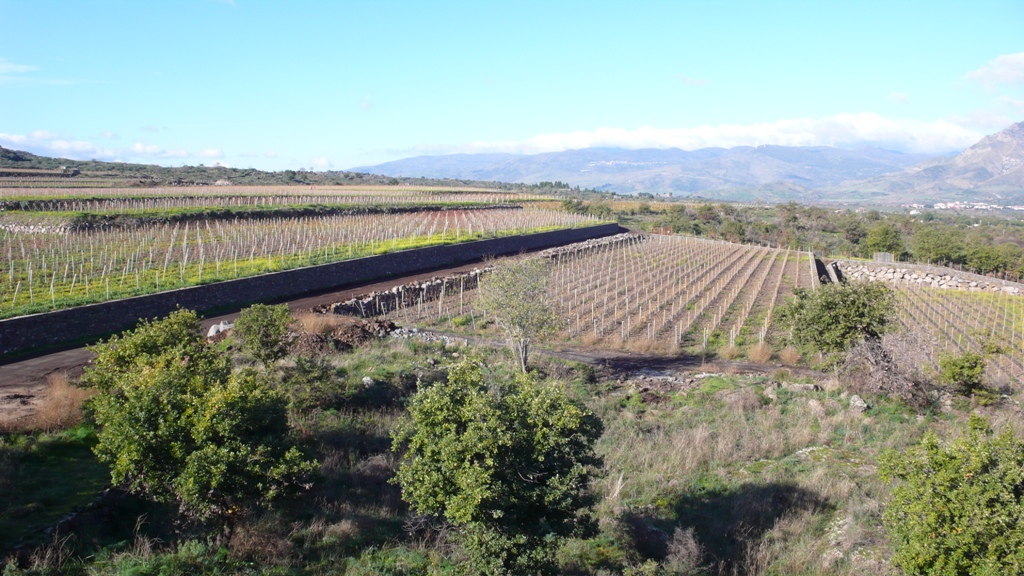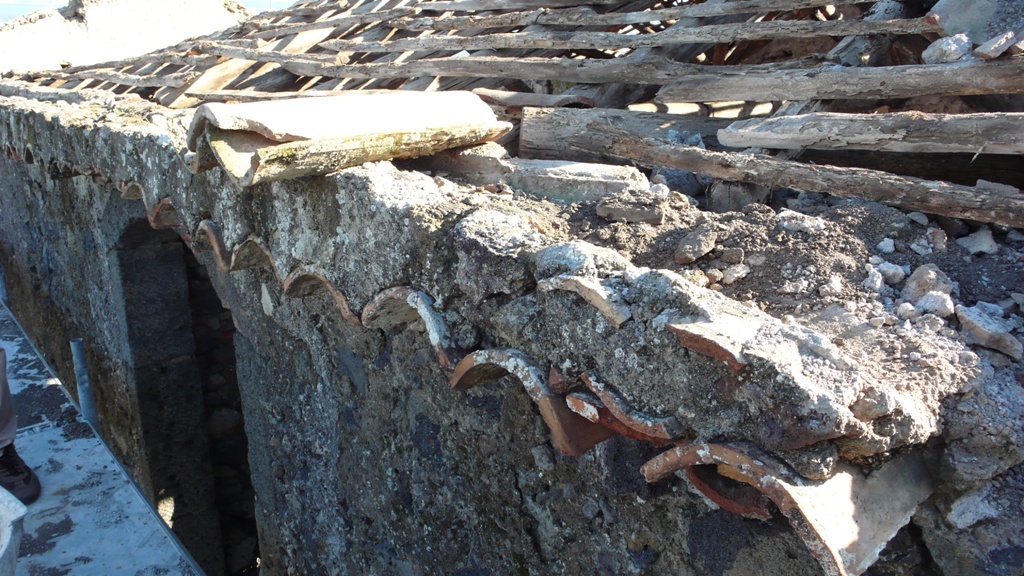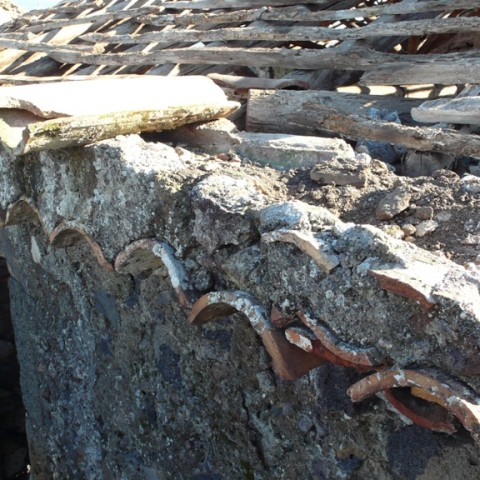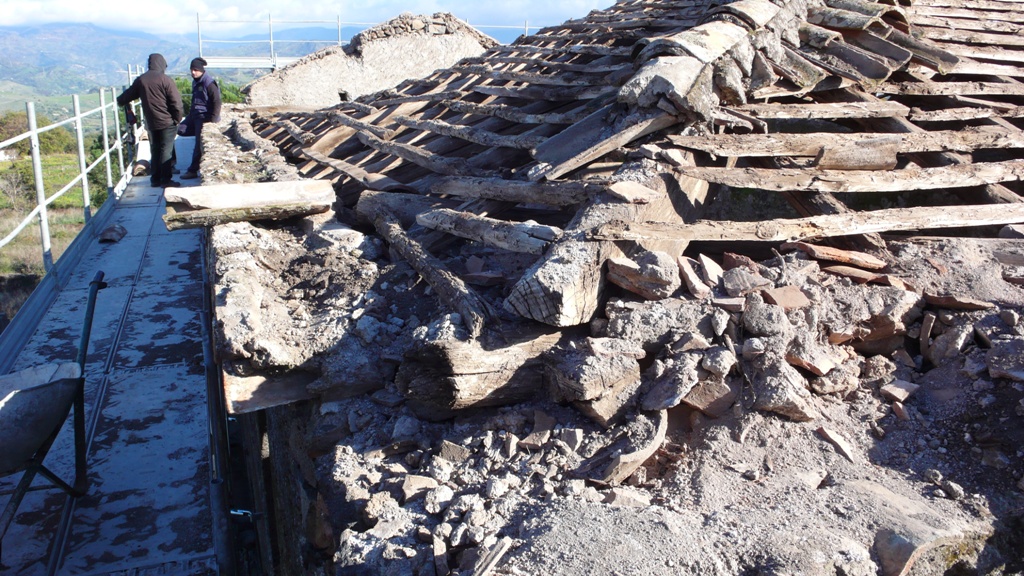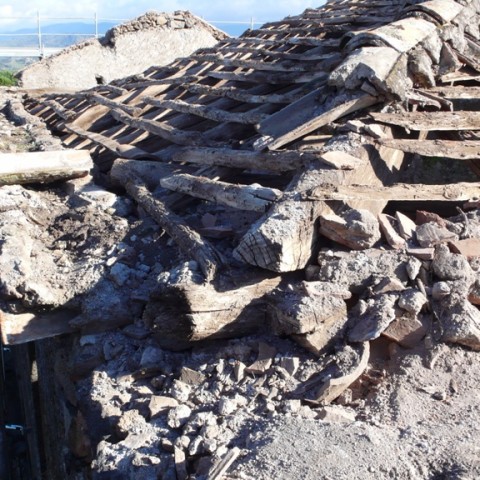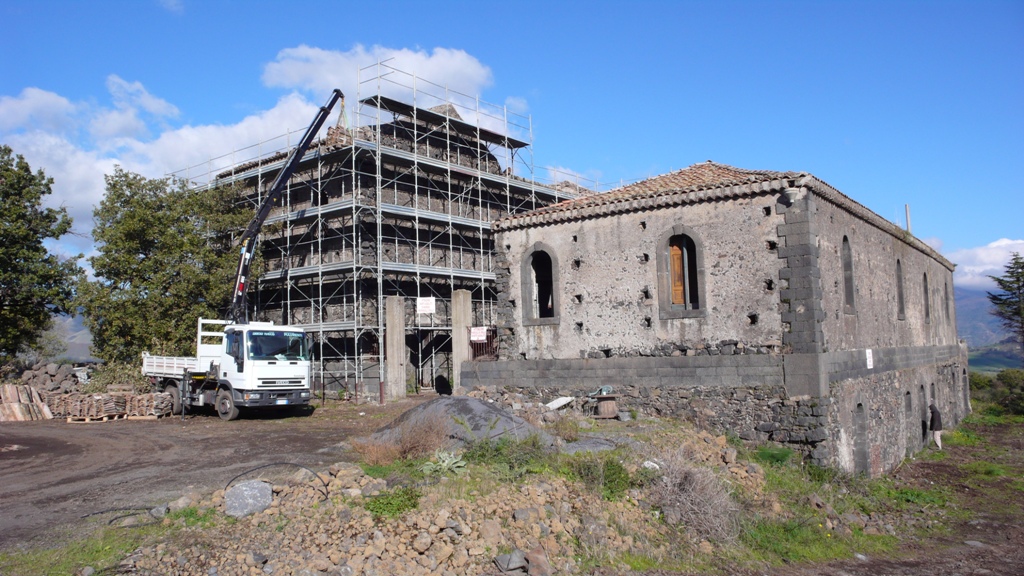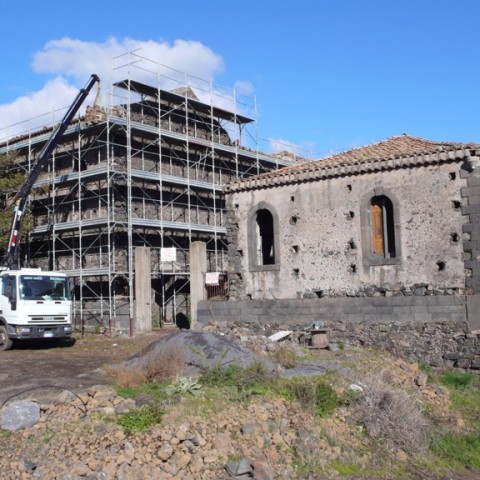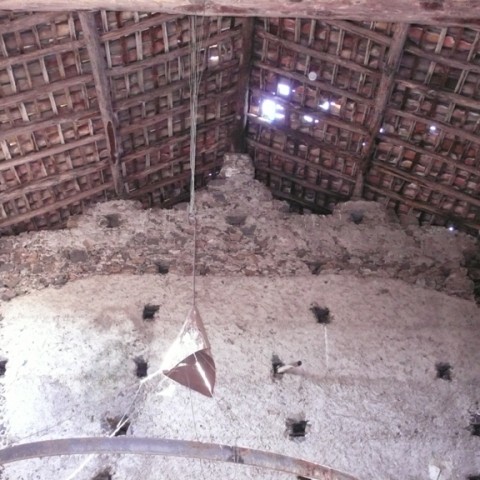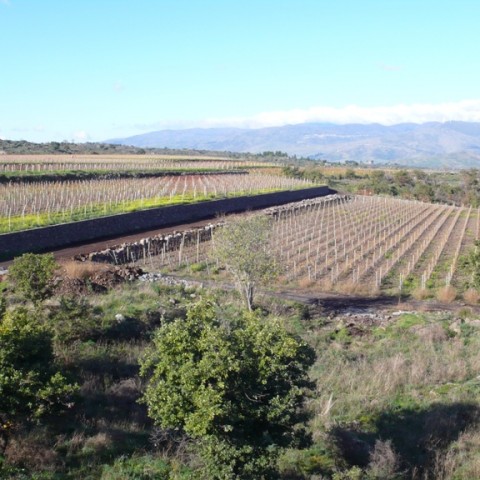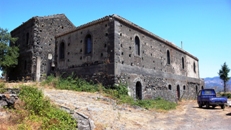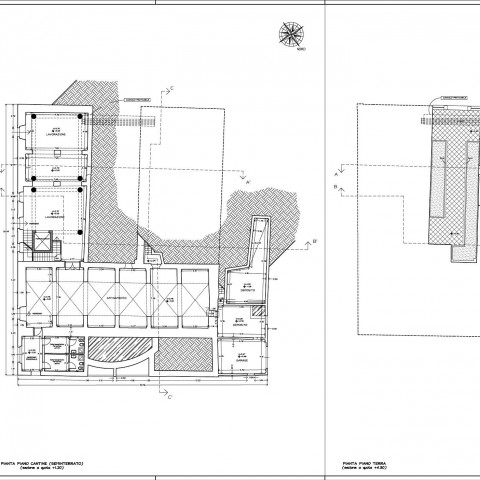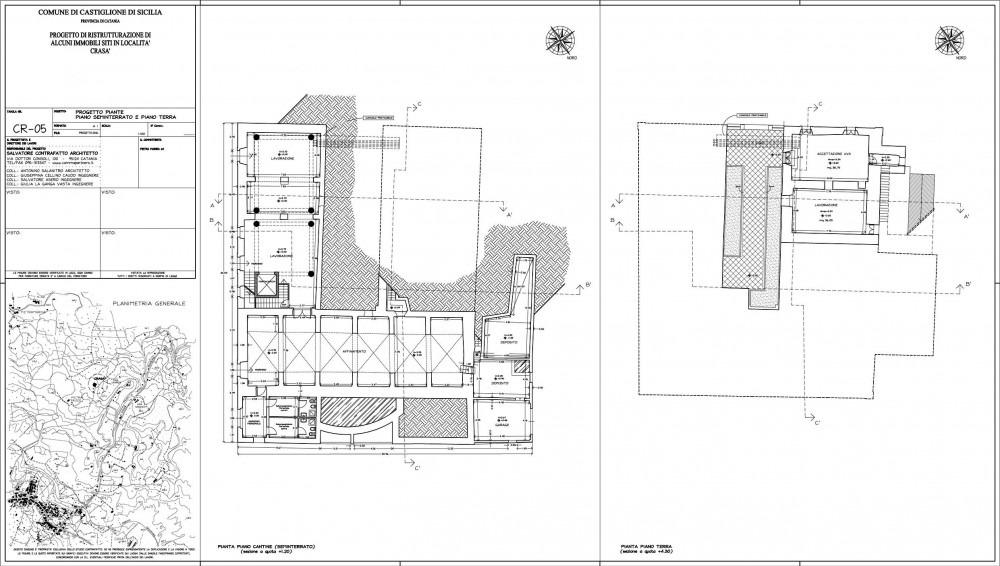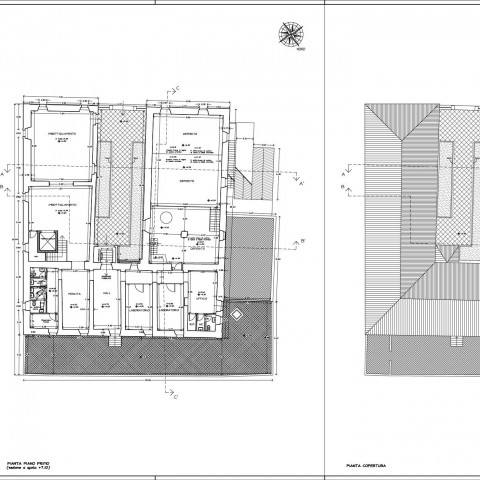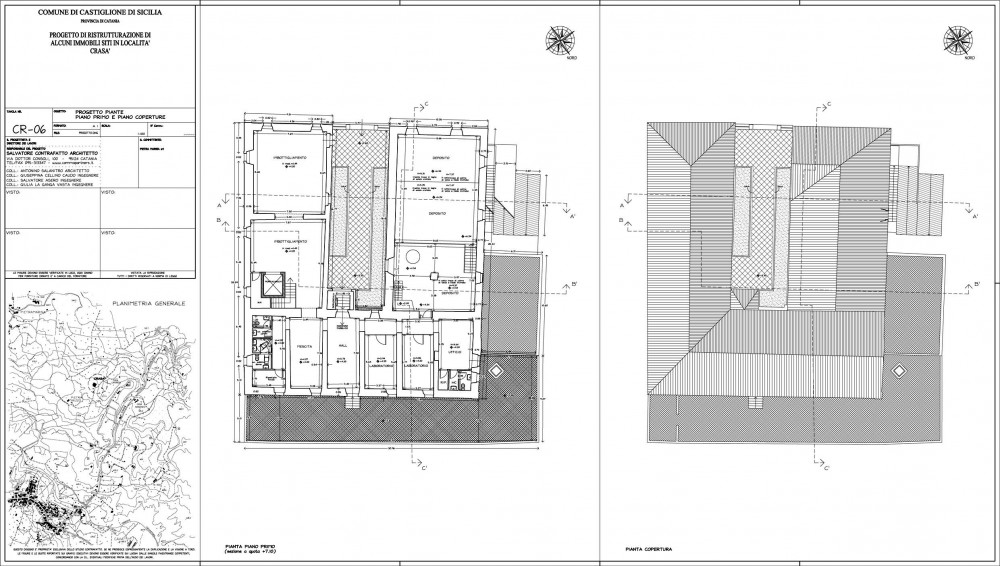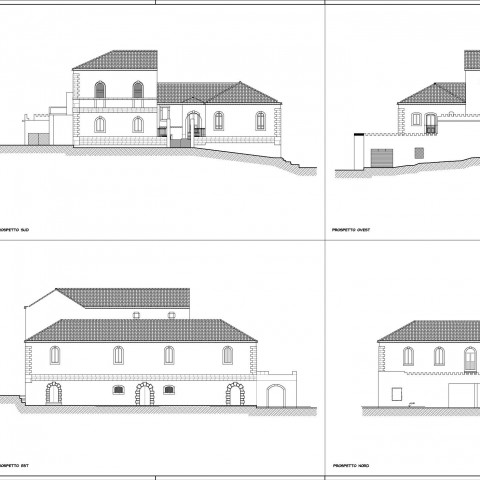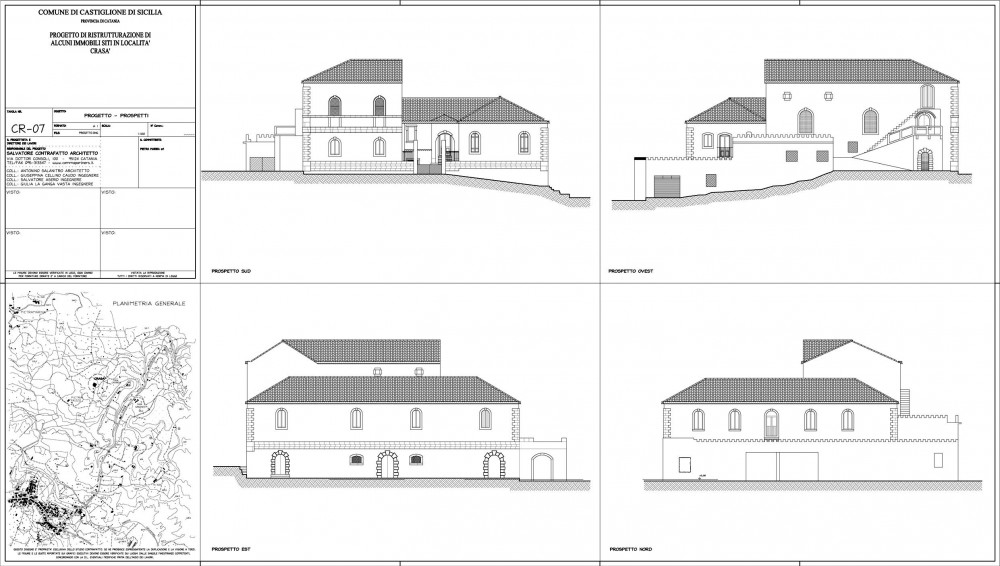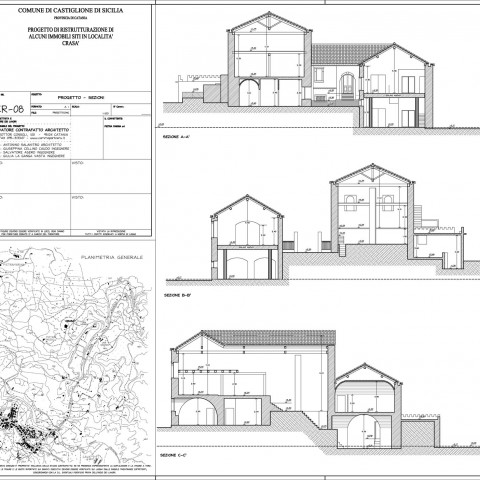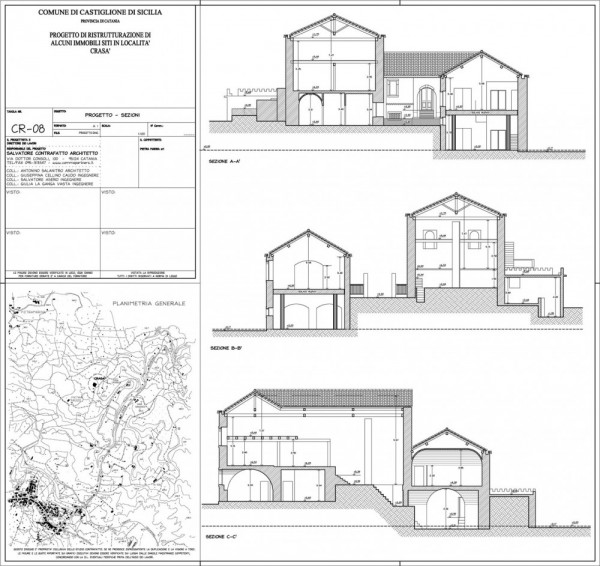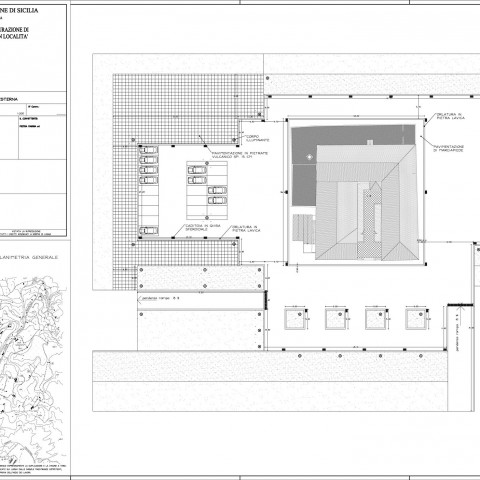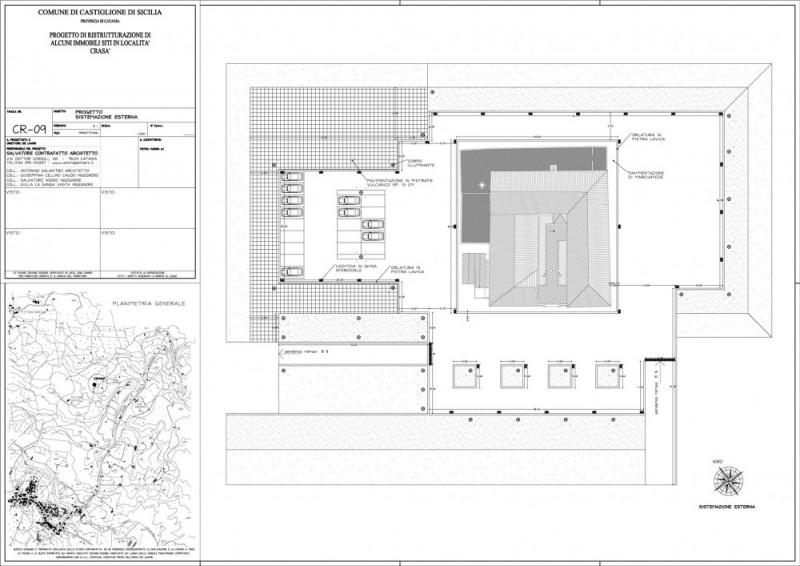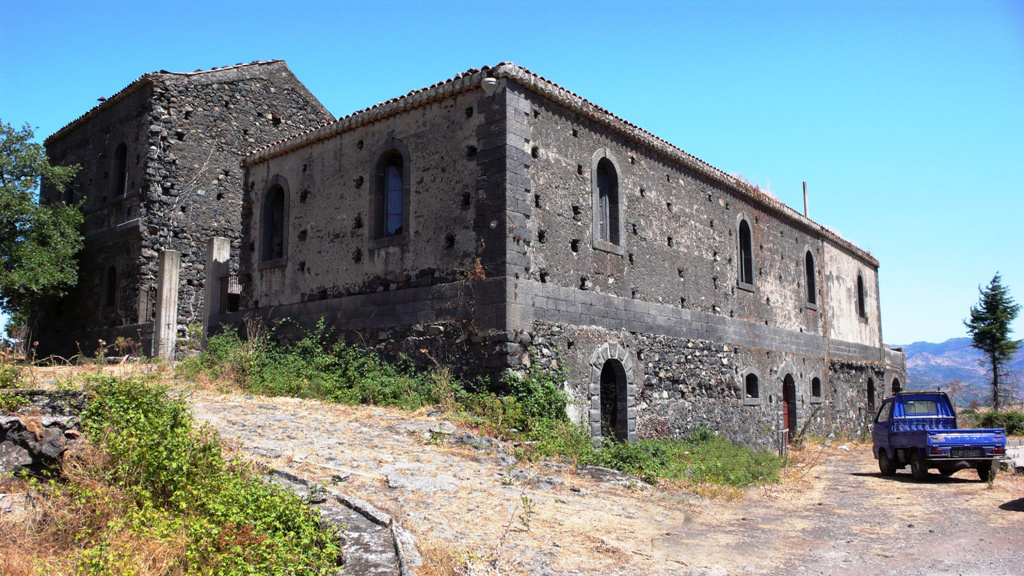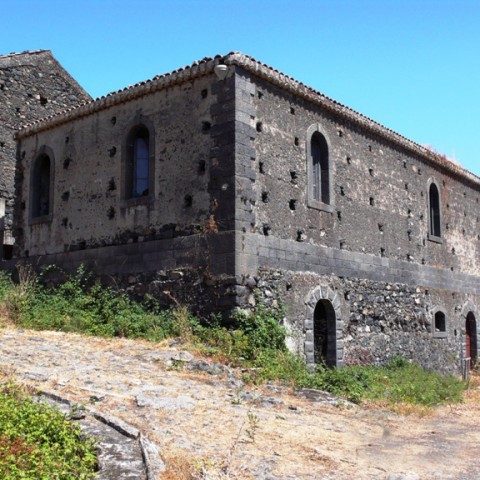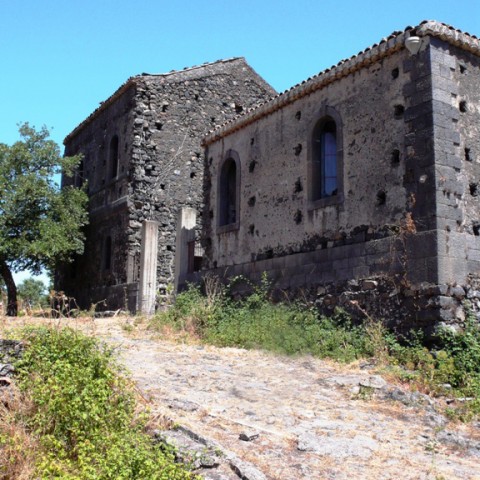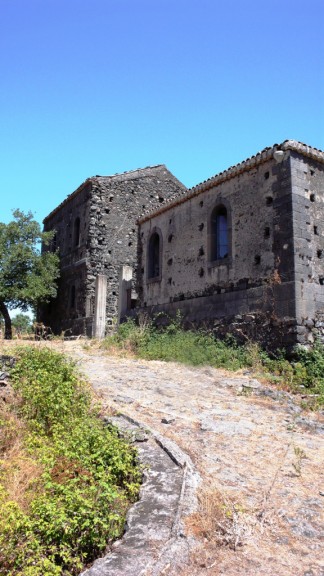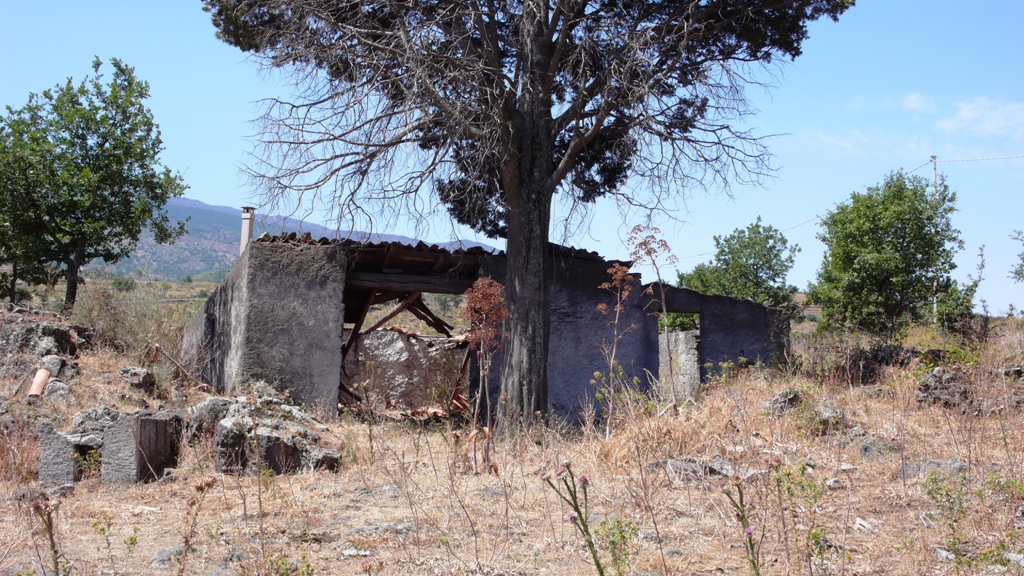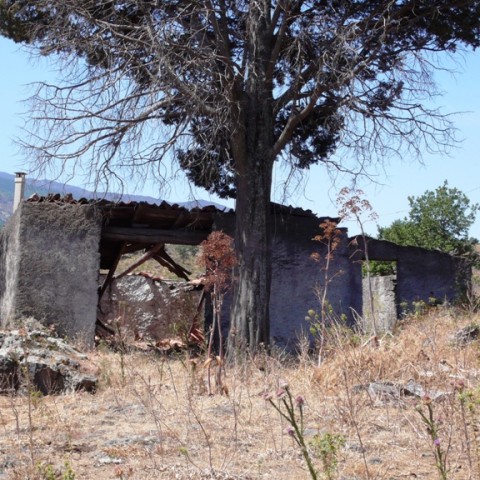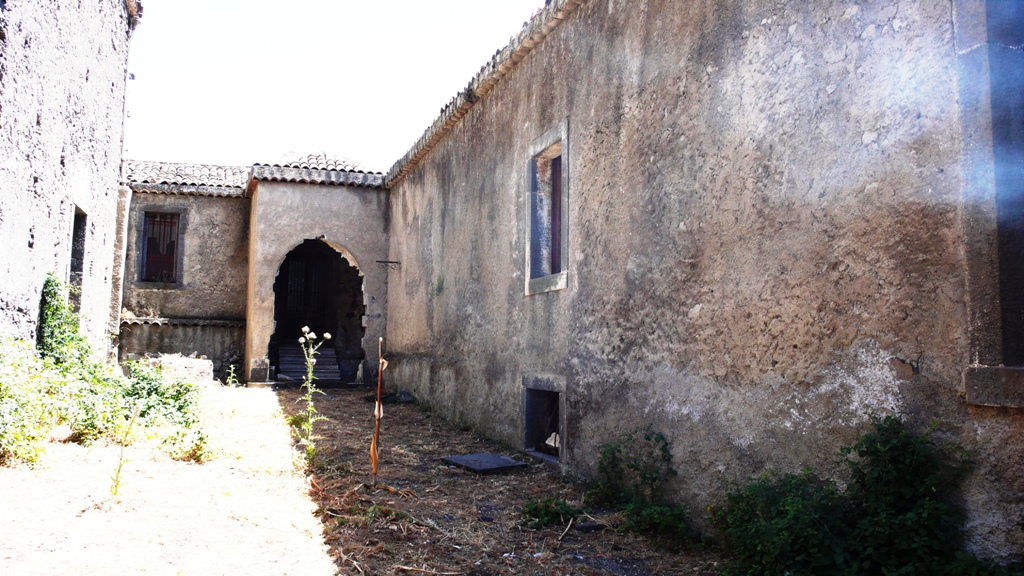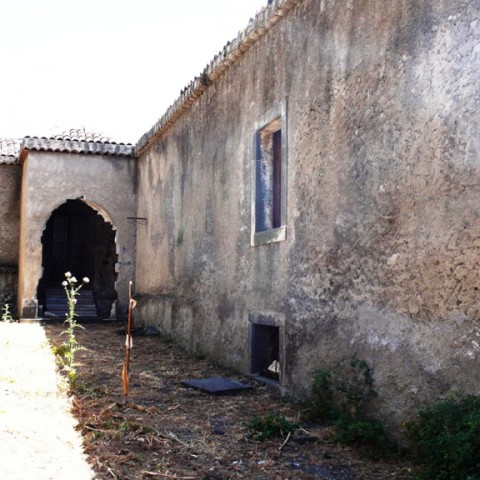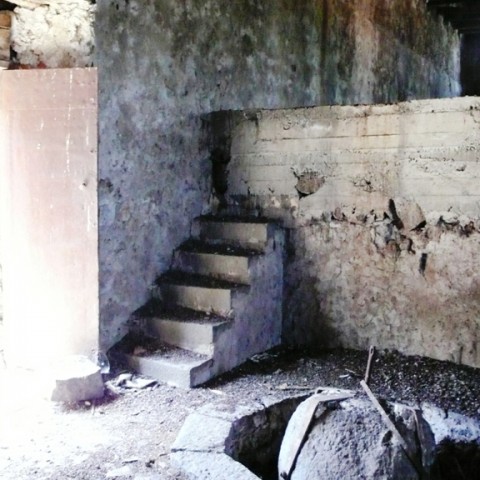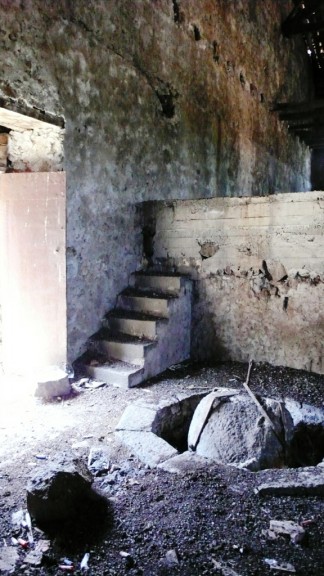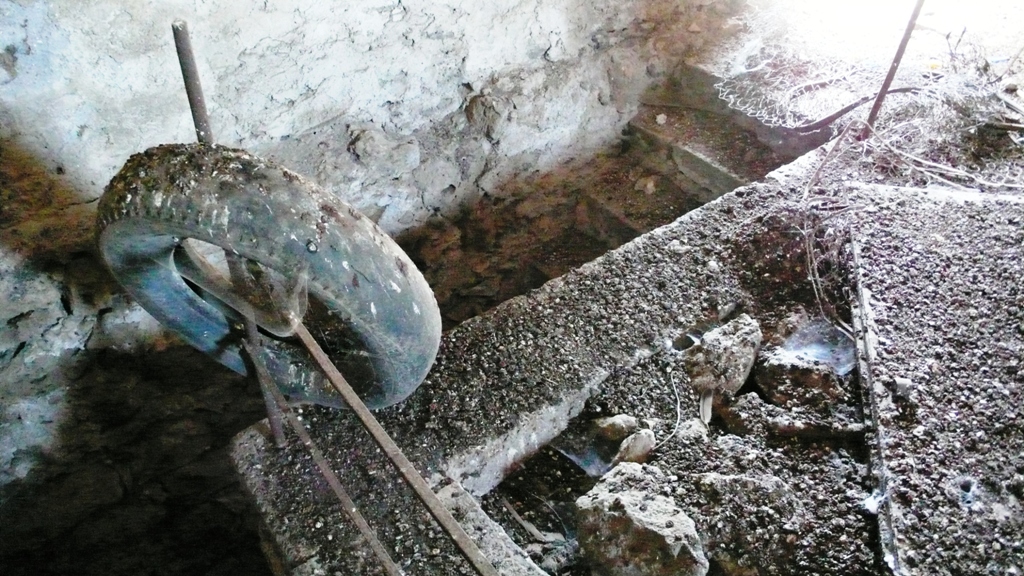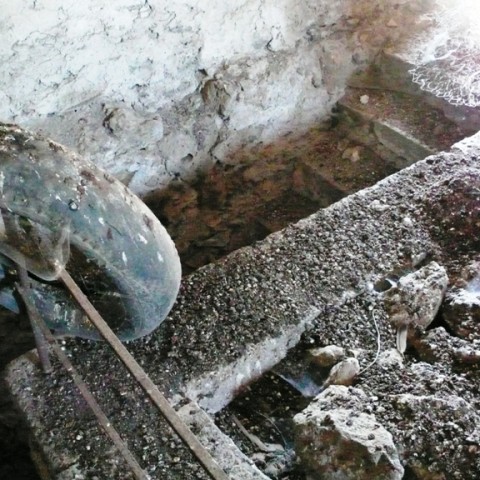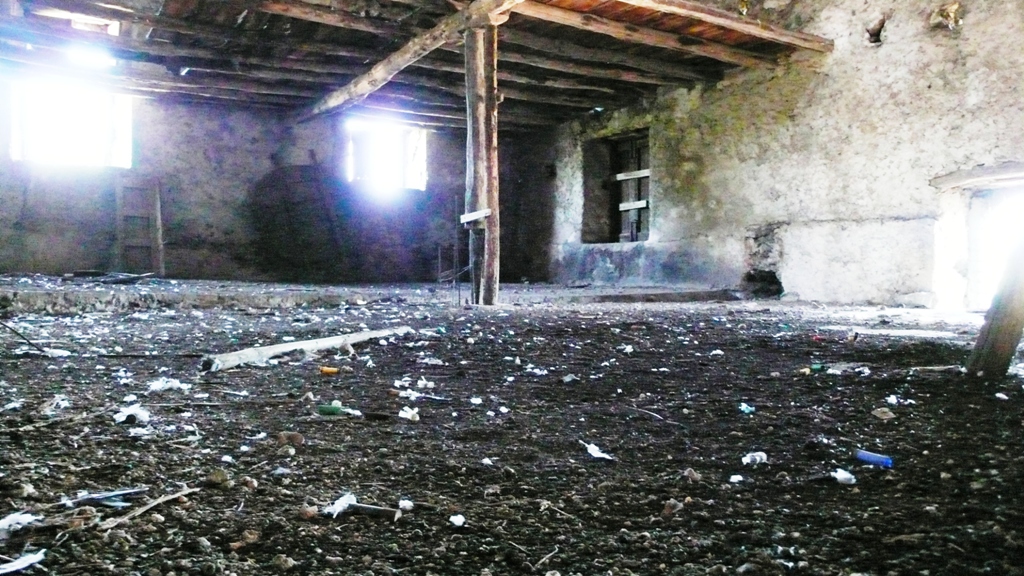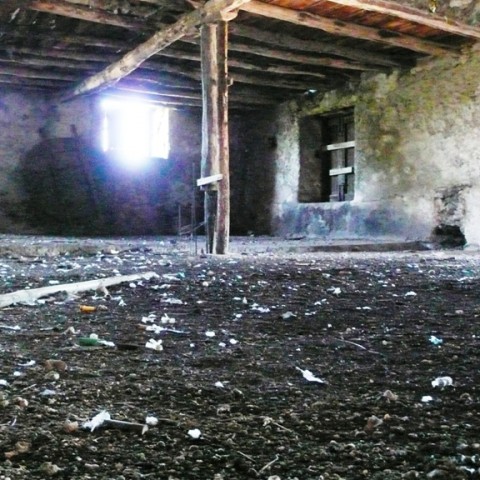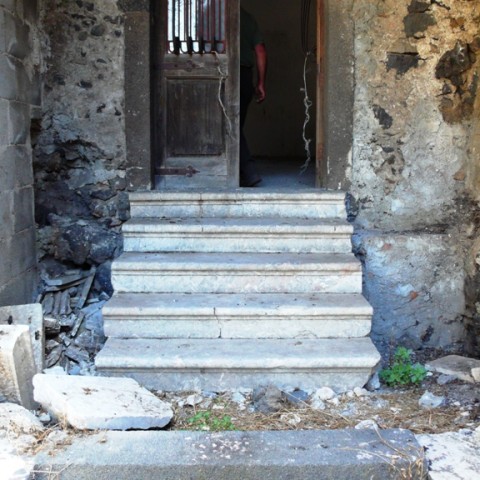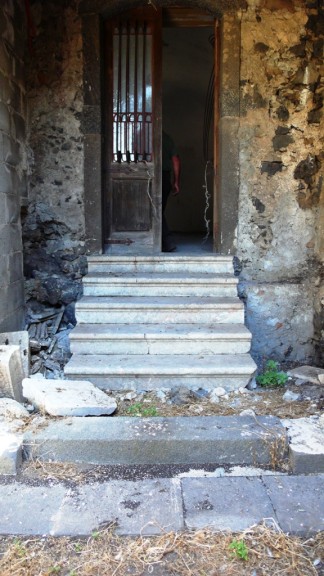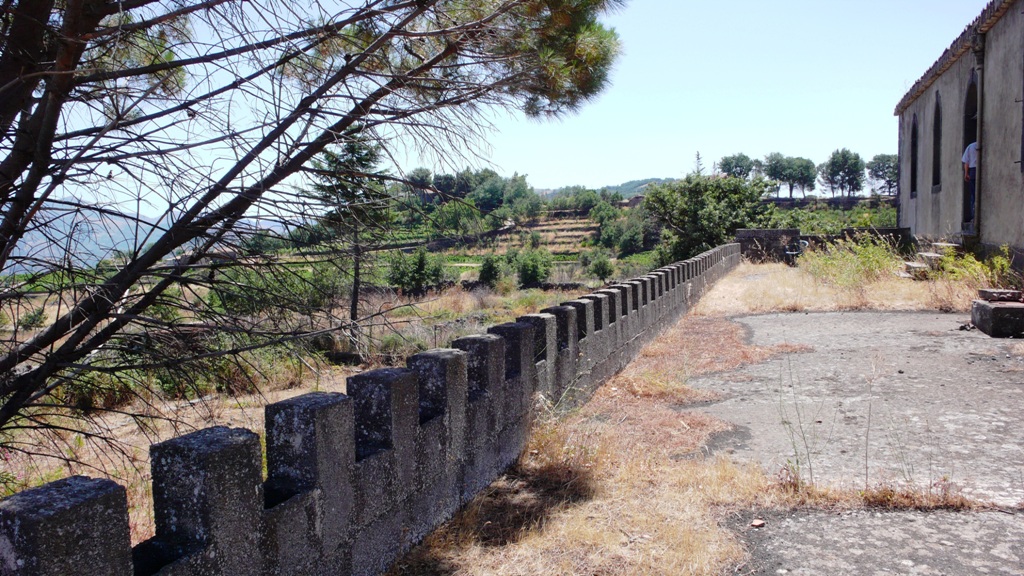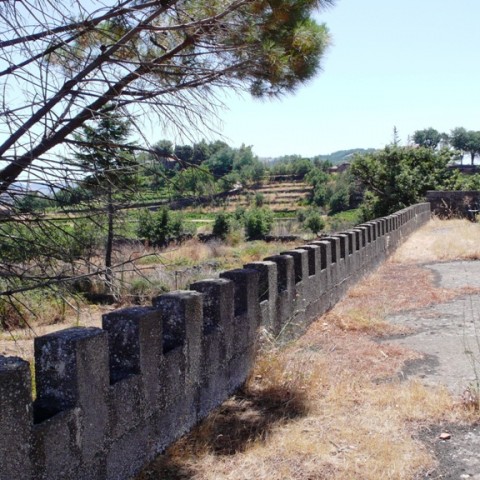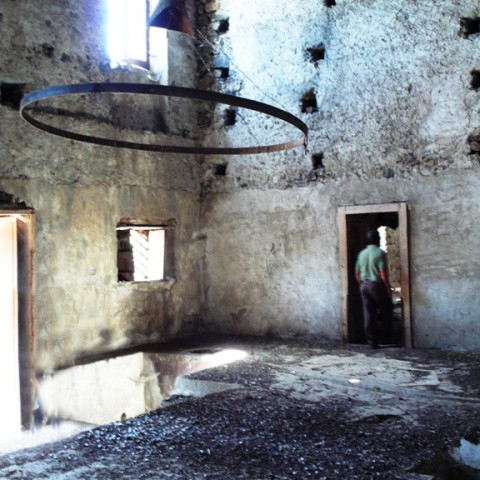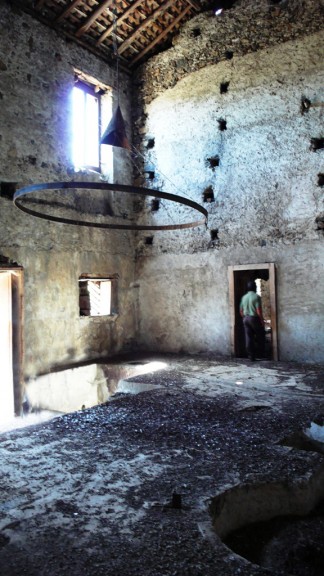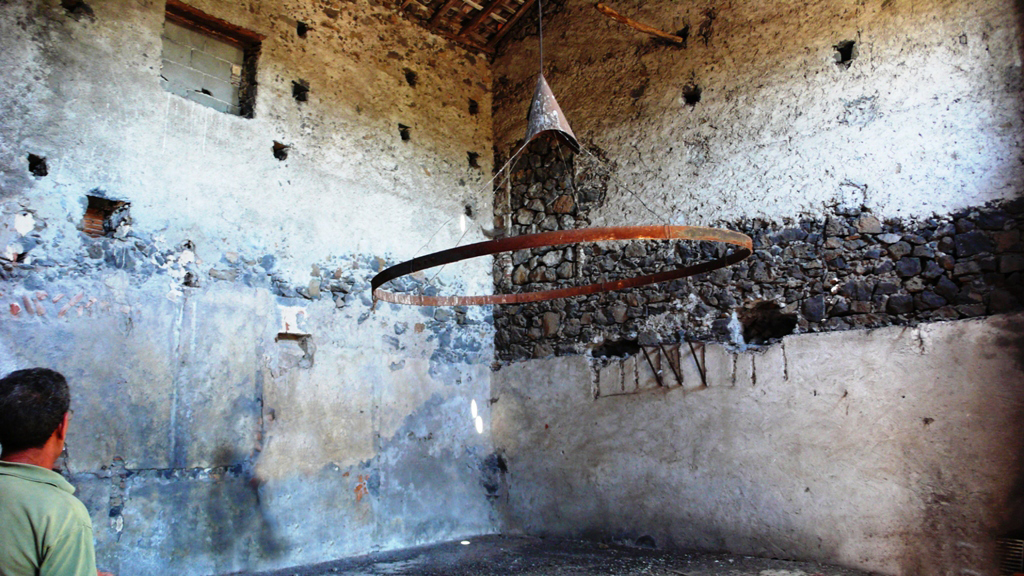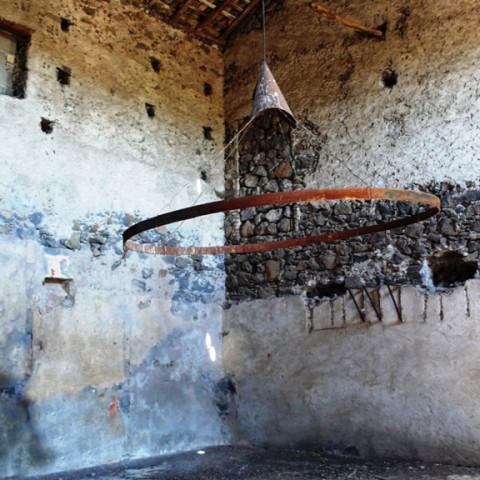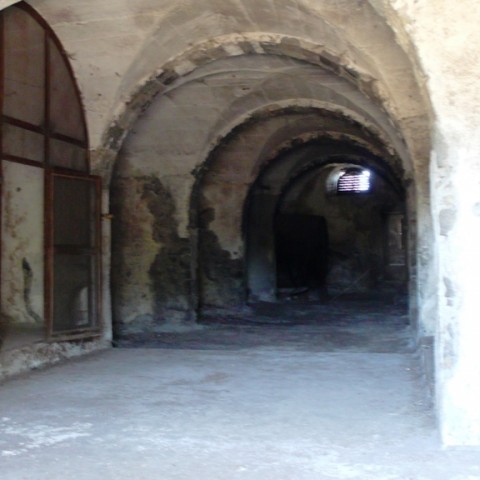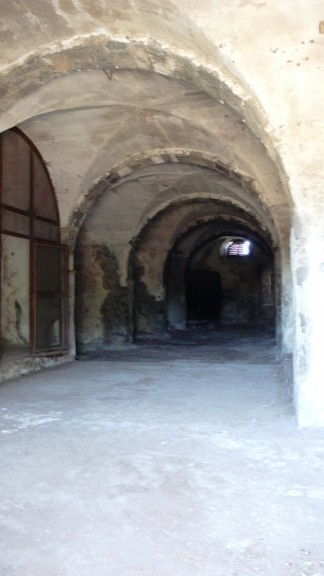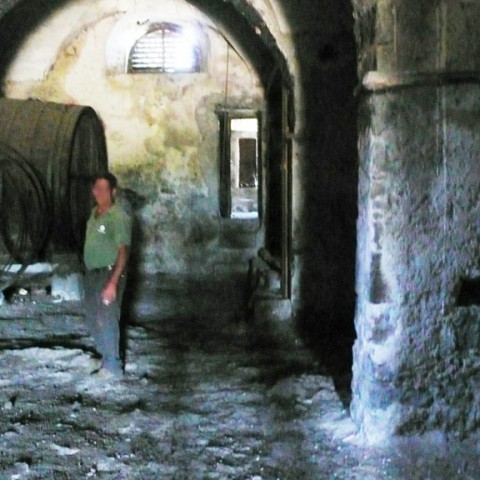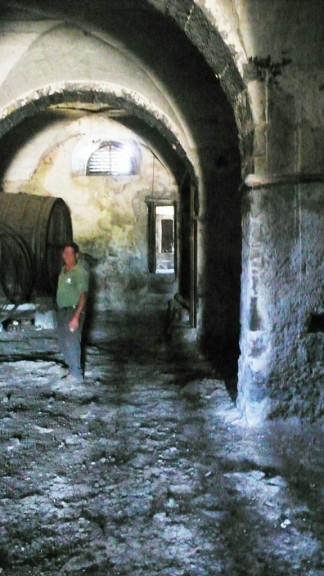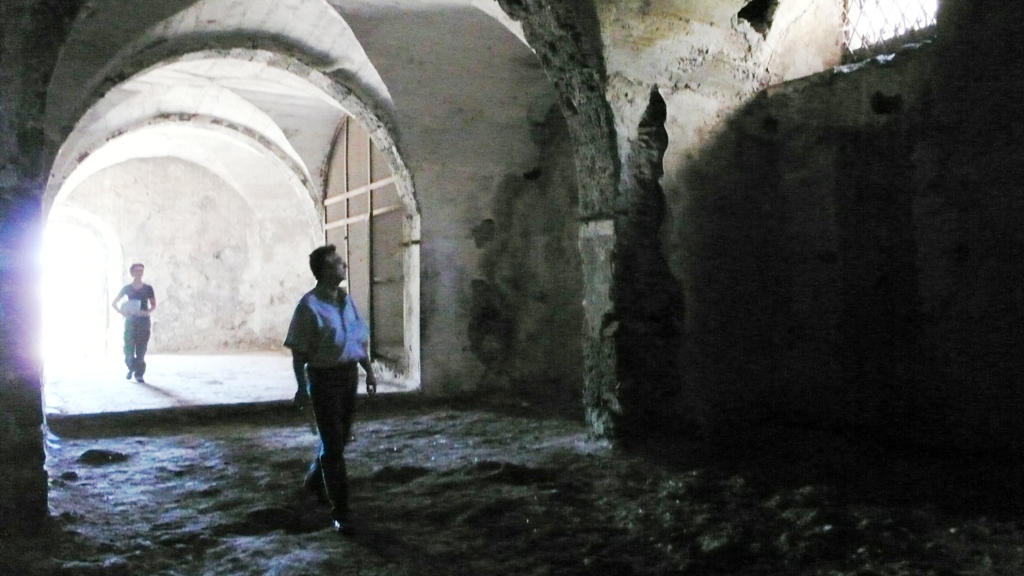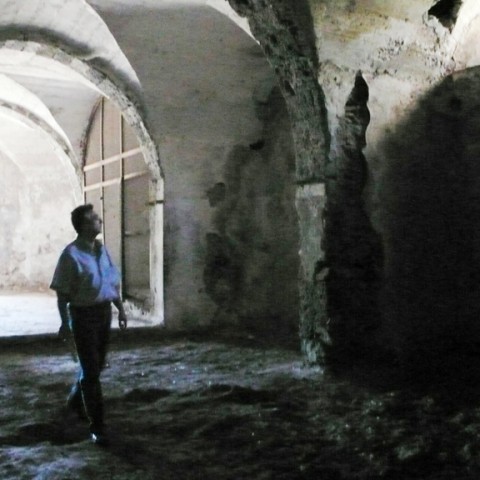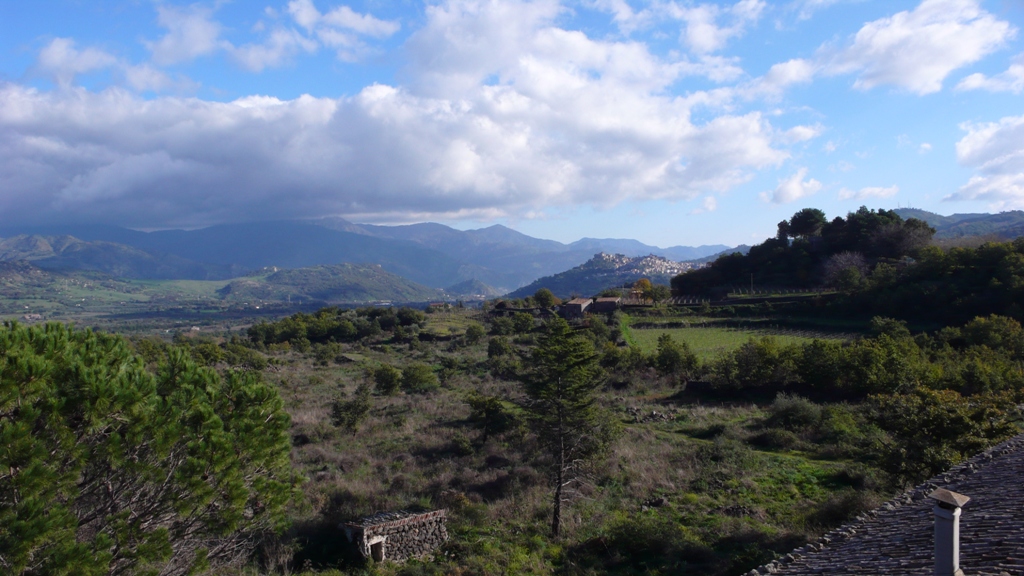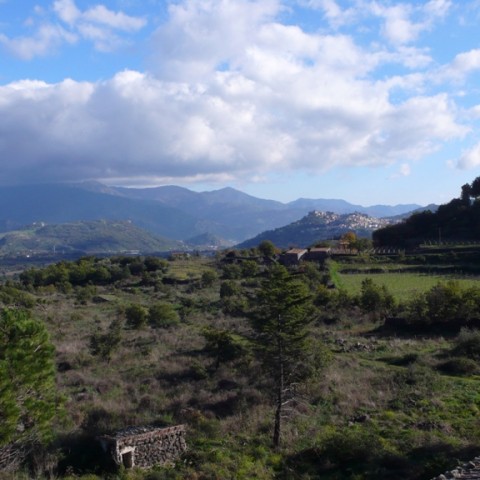project details
Location: Castiglione di Sicilia (CT), Italy
Designer: arch. Salvatore Contrafatto
Construction manager: arch. Salvatore Contrafatto
Contributors: ing. Salvatore Asero, ing. Giuseppina Cellino Caudo, ing. Giulia La Ganga Vasta, arch. Antonino Salanitro
Link: facebook album
Note: The building, built in the early twentieth century, consists of several buildings that define an impressive rural building having a U-shaped plan, with an internal courtyard open on the south side; its original destination was to support the agricultural activity that took place in the surrounding area, in fact, in addition to the presence of rooms for housing, located on the west side of the ground floor, for use by agricultural staff, even today throughout the plan basement and upper floors of the building, areas are visible for processing and storage of agricultural products such as mill, mill, warehouses, etc. Project The vast extension of land cultivated with vineyards, present not only in the area surrounding the intervention, but in the whole northern Piedmont area Etna, endorses the construction of a cellar, which stands as a private functional facility but capable of providing an activity of territorial service. The renovation of the building in question will be based on the utmost respect for the structural, building and architectural type already in fact, the recovery of the building will be aimed at maintaining the above typological and linguistic characteristics with any additions to the collapsed structures and finishes or degraded, always realized respecting the existing building typology, in the rural and architectural area of ??the examined area. The main structural interventions concern the rebuilding of the collapsed floor between the "working" areas in the basement and "the bottling" on the first floor, with the insertion of a stairwell and an elevator to connect the two rooms. closely linked by their functional complementarity. The particular function that will be carried out in the aforementioned rooms of the winery, linked to the processing of the wine product and its bottling, determines strong stress on the load-bearing structures, so that the renovation of the aforementioned floor will be made of steel, on a steel structure, jointed and independent of the perimeter walls of the building. In the rooms destined to deposit, placed on the first floor in the east wing of the building, the loft will be redone, always with the same dimensions and with the same wooden structure as the existing one. The entire roof structure and the relative roof covering of the building will be restructured in the partially degraded areas, or entirely rebuilt using the same type of construction (purlin or truss system) and the same materials, such as wooden supporting elements, brick tiles type "coppi alla siciliana", reused from existing ones or integrated with new tiles having the same constitutive properties, etc. All the physical and linguistic characteristics of the finishing elements will be maintained, restructured and enhanced: - the external wall facings, made of masonry with a view of lava stone, will be revised, cleaned and treated with water repellents to protect them from deterioration; - all the internal plasters will be based on lime, suitable for the characteristics of green building, as well as the interior painting will be based on natural dispersion resins, with eco-compatible certification; - the mixed masonry walls, in the face and plaster lava stone, placed inside the building, as for example in the "refining" area of ??the basement, will be restored, cleaned and enhanced in the precious linguistic alternation of the materials; - the internal and external fixtures will be overhauled or completely redone, with the same typological characteristics, both in simple and linear design, both in wood or iron material for protection grilles, gates or other service openings; - the floorings will be repeated with the same recurring types in the rural buildings of the area, such as the lava stone bases in the "refining" environment of the basement and the areas outside the building, the terracotta floors for the terraces or some areas of the internal courtyard, while for the specialized areas of the cellar, such as "processing", "bottling", etc. Self-leveling floors made of thermosetting resin mixtures will be used.
Designer: arch. Salvatore Contrafatto
Construction manager: arch. Salvatore Contrafatto
Contributors: ing. Salvatore Asero, ing. Giuseppina Cellino Caudo, ing. Giulia La Ganga Vasta, arch. Antonino Salanitro
Link: facebook album
Note: The building, built in the early twentieth century, consists of several buildings that define an impressive rural building having a U-shaped plan, with an internal courtyard open on the south side; its original destination was to support the agricultural activity that took place in the surrounding area, in fact, in addition to the presence of rooms for housing, located on the west side of the ground floor, for use by agricultural staff, even today throughout the plan basement and upper floors of the building, areas are visible for processing and storage of agricultural products such as mill, mill, warehouses, etc. Project The vast extension of land cultivated with vineyards, present not only in the area surrounding the intervention, but in the whole northern Piedmont area Etna, endorses the construction of a cellar, which stands as a private functional facility but capable of providing an activity of territorial service. The renovation of the building in question will be based on the utmost respect for the structural, building and architectural type already in fact, the recovery of the building will be aimed at maintaining the above typological and linguistic characteristics with any additions to the collapsed structures and finishes or degraded, always realized respecting the existing building typology, in the rural and architectural area of ??the examined area. The main structural interventions concern the rebuilding of the collapsed floor between the "working" areas in the basement and "the bottling" on the first floor, with the insertion of a stairwell and an elevator to connect the two rooms. closely linked by their functional complementarity. The particular function that will be carried out in the aforementioned rooms of the winery, linked to the processing of the wine product and its bottling, determines strong stress on the load-bearing structures, so that the renovation of the aforementioned floor will be made of steel, on a steel structure, jointed and independent of the perimeter walls of the building. In the rooms destined to deposit, placed on the first floor in the east wing of the building, the loft will be redone, always with the same dimensions and with the same wooden structure as the existing one. The entire roof structure and the relative roof covering of the building will be restructured in the partially degraded areas, or entirely rebuilt using the same type of construction (purlin or truss system) and the same materials, such as wooden supporting elements, brick tiles type "coppi alla siciliana", reused from existing ones or integrated with new tiles having the same constitutive properties, etc. All the physical and linguistic characteristics of the finishing elements will be maintained, restructured and enhanced: - the external wall facings, made of masonry with a view of lava stone, will be revised, cleaned and treated with water repellents to protect them from deterioration; - all the internal plasters will be based on lime, suitable for the characteristics of green building, as well as the interior painting will be based on natural dispersion resins, with eco-compatible certification; - the mixed masonry walls, in the face and plaster lava stone, placed inside the building, as for example in the "refining" area of ??the basement, will be restored, cleaned and enhanced in the precious linguistic alternation of the materials; - the internal and external fixtures will be overhauled or completely redone, with the same typological characteristics, both in simple and linear design, both in wood or iron material for protection grilles, gates or other service openings; - the floorings will be repeated with the same recurring types in the rural buildings of the area, such as the lava stone bases in the "refining" environment of the basement and the areas outside the building, the terracotta floors for the terraces or some areas of the internal courtyard, while for the specialized areas of the cellar, such as "processing", "bottling", etc. Self-leveling floors made of thermosetting resin mixtures will be used.

